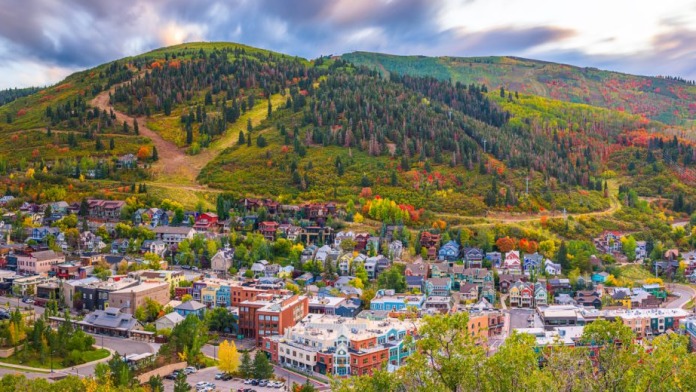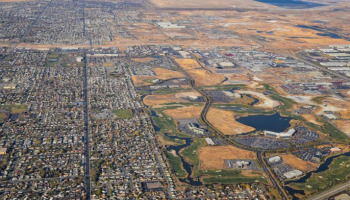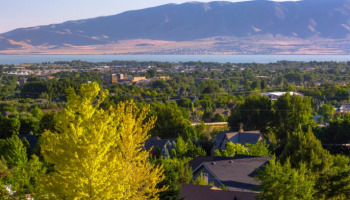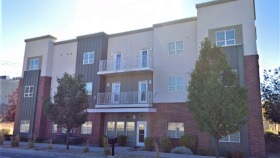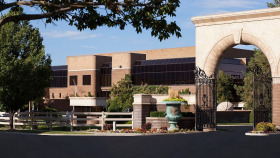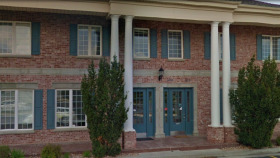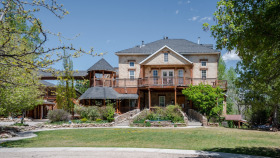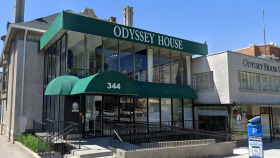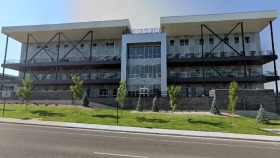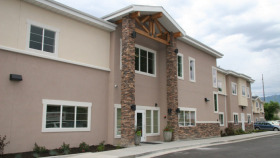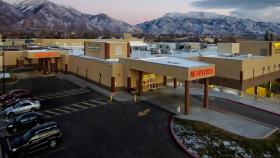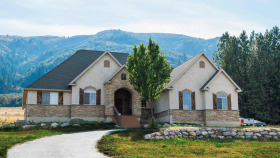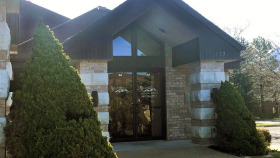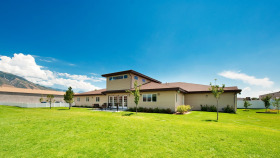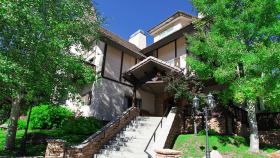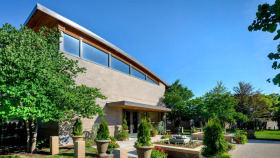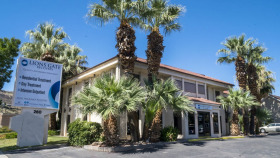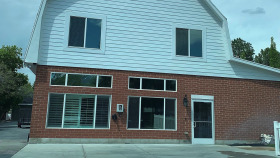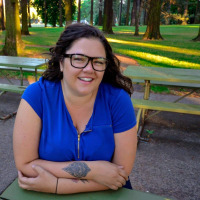Expert Insights
In a time where states are being forced to get creative in their efforts to combat opioid addiction, Utah has come up with a program that has a wealth of promise. The state’s most rural counties have been hit the hardest by opioid addiction. In fact, eight out of every 10 overdose deaths in Utah are caused by opioids. So, the University of Utah’s College of Nursing and School of Medicine are teaming up to improve prevention and treatment of opioid addiction in rural areas of the state. The program, called the Utah Opioid Healthcare Consortium—Collaborative Care Model (UROHC-CCM) will target Carbon, Emery, and Wayne Counties – three rural areas with the highest rates of opioid-related deaths in Utah. To address the enormous gap in addiction treatment resources, the Consortium plans to educate and train teams of healthcare professionals to deliver outpatient medication-assisted treatment with buprenorphine at six of the region’s family practice clinics. These newly-trained healthcare teams will also serve as the primary point of contact for each patient participating in the program.
~ Olivia Pennelle
How Much Does Drug Rehab Cost in Utah?
Utah is ranked 29th nationwide in terms of addiction treatment affordability, with an average cost of drug and alcohol rehab of $56,782 (without insurance).
- Medical detox is the most expensive, with an average cost of $139,988
- Long-term inpatient drug rehab in Utah costs an average of $50,107
- Outpatient addiction treatment in Utah costs an average of $8,326
- Outpatient methadone treatment is the most affordable, with an average cost of $7,397
Low-Cost & Free Drug Rehab Options in Utah
As of 2024, there were over 340 drug rehab facilities across the state of Utah. These facilities accept several payment methods. Of those treatment facilities, the following numbers reflect how many accept their respective payment methods:
There are 98 low cost or free addiction treatment centers in Utah. Their services include inpatient and outpatient treatment options, including intensive outpatient treatment, relapse prevention and aftercare programs.
Some of these treatment options also include medication assisted treatment where clients receive medications such as naltrexone, methadone and buprenorphine to ease withdrawal symptoms and decrease cravings.
Because many individuals experiencing alcohol and substance use disorder also have co occurring mental illnesses such as bipolar disorder, depression, anxiety, and PTSD, many addiction treatment centers in Utah offer mental health services as well.
Case management services also engage those facing homelessness, food insecurity, and unemployment by connecting clients with resources in their communities. Often, clients work with healthcare and insurance specialists to enroll in state funded health care plans such as Medicare or Medicaid.
Private Pay and Insurance
There are many major commercial health insurance carriers in the state of Utah, with eight insurers offering exchange plans on the Marketplace in 2024. Some commercial providers include:
Aetna
Aetna of Utah covers alcohol and substance use disorder treatment. Coverage and out of pocket expenses depend on the individual’s benefit plan. These services may include inpatient and outpatient treatment, online and in person counseling services, and case management. Through their Aetna 360 Behavioral Health Program, individuals can contact them and a care advocate will work on determining what the best treatment options are for each circumstance. They offer services by licensed healthcare providers.
Imperial Health Plan of the Southwest
Substance Use Disorder treatment is a covered benefit as per the Affordable Care Act (ACA). The details of coverage depends on which plan an individual has chosen. Out of pocket expenses vary. Individuals will need to contact the insurance provider to determine what those costs will be and which type of services are available to them.
Cigna
Alcohol and Substance Use Disorder treatment is a covered benefit with Cigna. These services may include inpatient and outpatient treatment options, counseling and case management. The covered services are based on the individual’s benefit plan and may need prior authorization.
Individuals should check their benefits plan or call the insurance company to determine coverage and what out-of-pocket expenses will be.
University of Utah Health Plans
The University of Utah Health Plans covers alcohol and substance use disorder treatment. Their mental health benefits are managed through Huntsman Mental Health Institute. Services include inpatient and outpatient treatment options, medication assisted treatment, counseling and case management services.
The coverage and amount of out of pocket expenses depend on the individual’s plan. Individuals should contact their insurance provider to determine network provider services and discuss treatment costs.
Select Health
Alcohol and substance use disorder treatment is a covered benefit with Select Health of Utah. They offer care management services which assists individuals with determining what type of treatment options are covered benefits, find in-network providers and determine out of pocket expenses.
Prior authorization is needed for most services. Individuals need to work with their insurance provider to find what treatment options best suit their needs.
Medicaid
Utah provides health insurance coverage for residents who meet certain criteria such as income level, age,residency and certain medical conditions. These Medicaid plans cover inpatient and outpatient substance use disorder treatment services at facilities that accept this type of insurance.
Because Utah has a medicaid system that offers individuals different types of benefit plans, for example some purchase plans on the marketplace and pay a fee for service, individuals need to check with their provider to determine what are covered services.
Medicare
Medicare provides insurance coverage for individuals over the age of 65 and in some cases individuals with disabilities and certain disorders. Medicare Part A pays for inpatient substance abuse treatment.
Clients are required to pay the same co-pays they would be charged for any other type of inpatient hospitalization. For those with Medicare Part B, outpatient substance abuse treatment services from a clinic or hospital outpatient department are covered.
Military Insurance
TRICARE and VA benefits are accepted at participating providers throughout the state of Illinois. For those with alcohol and substance use disorders, the Veterans Administration offers inpatient and outpatient services at their clinics and hospitals at no cost.
Tribal Funding/Programs
All individuals of Native American or Alaska Native descent are eligible for health care and Medicaid through the Indian Health Service (IHS). Alcohol and substance use disorder treatment are covered services.
Other Low Cost Options
For those individuals without commercial insurance, government sponsored insurance, or insurance through military service, some providers will accept sliding scale payment options, no fee for service or financial aid. Clients will need to speak with their service providers to find out what options are available to them.
Free Addiction Treatment Resources in Utah
Utah Department of Health and Human Services
This department offers many free resources for those experiencing alcohol and substance use disorder. Their official website has links to resources by county. Here, information on local treatment and recovery services is provided.
They also work to assist individuals through the Assisted Employment Program. Information on this program is outlined on their website for those in recovery interested in employment through partnering employers and organizations.
UtahNaloxone.com
This is an organization whose mission is to ensure that Narcan (naloxone) is free and accessible to those who need it. Through their program, many libraries and fire stations in Utah are places where people can obtain free Narcan with no questions asked. On their website is a link to find these locations.
They also provide education on overdose symptoms and how to administer Narcan.
Utah Support Advocates for Recovery Awareness
This is a non-profit organization that offers recovery support services in five Utah counties and their surrounding areas. They provide individuals and families affected by alcohol and substance use disorder with services such as peer recovery support programs and community reinforcement and family training.
Additionally, USARA works within the community to provide outreach and prevention education, as well as advocacy work at the local and state government to move forward legislation to combat the substance use crisis in their communities.
Volunteers of America Utah
This is a non-profit organization working with individuals and families facing crises such as substance use disorder, homelessness, food insecurity and domestic abuse. They provide services for youth and adults.
Their outreach and education programs work with people to improve their lives and help to create a more stable environment for them to succeed. They have counseling services, detox programs, housing services and life skills training throughout the state.
SAFEUT App
This Is an application for smartphones, both Apple and Android devices, that provides a 24/7 crisis chat service for Utah youth. This service is for those with any type of mental health crisis such as substance use disorder, anxiety, depression and self harm.
Alcohol and Drug Stats in Utah
In 2021, 14,518 Utah residents obtained substance abuse or use disorder treatment. Single white males living in an urban environment were the population with the highest attendance rates of drug rehabs in Utah. Data regarding the substances being abused the most at the time of admission into a treatment program includes the following:2
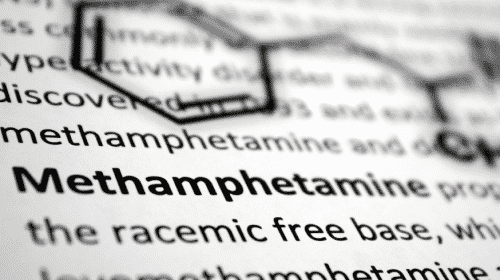
31% admitted to misusing methamphetamine
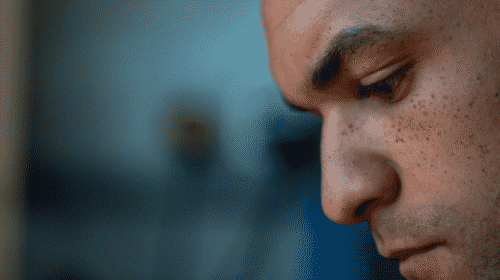
25% admitted to misusing alcohol
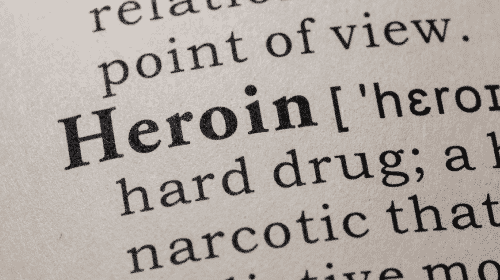
25% admitted to misusing heroin
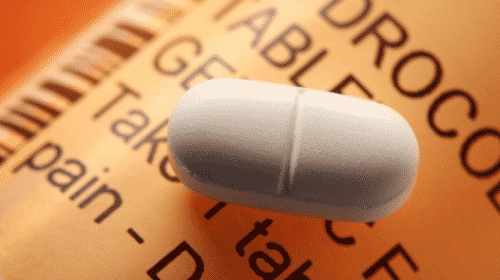
1% admitted to misusing prescription painkillers
The most recent National Survey on Drug Use and Health conducted by the Substance Abuse and Mental Health Services Administration (SAMHSA) reveals even more details about Utah’s drug and alcohol problem. Drug and alcohol abuse among Utah residents 12 and older is prevalent. In the month before the survey, the average estimates regarding substance abuse, in thousands, were as follows:3
used cocaine
used methamphetamines
used prescription pain relievers
drank alcohol
Sadly, an estimated 317,000 residents in Utah needed alcohol or drug rehab but did not attend a treatment center.3
Among Utah youth, addiction is slightly declining but still alarming. The 2021 Student Health and Risk Prevention (SHARP) statewide survey of more than 71,000 students offers insight into which types of substances are misused the most. Researchers learned that among 6th, 8th, 10th, and 12th graders in the month before the survey:4
- 3% drank alcohol
- 5% smoked marijuana
- 7% abuse prescription drugs
- 8% abuse inhalants
- .5% abuse hallucinogens
Drug Laws in Utah
Medical Cannabis Act
First enacted in 2018, Medical Marijuana was made legal in the state of Utah. The Act has undergone a number of changes since first voted into law.
In Utah, individuals with qualifying medical conditions can legally obtain medical marijuana from authorized medical professionals and from legal state recognized cannabis pharmacies.
Under this law, the following terms apply:
- Patients are allowed to possess the lesser of a one-month supply based on the dosage amount specified by their doctor or state-licensed pharmacist at a medical cannabis pharmacy or four ounces of flower or 20 grams THC.
- Patients may not be denied access to organ transplants.
- State employees may not be disciplined or discriminated against on the basis of their status as a registered patient and their use of medical cannabis in compliance with the law.
- It prohibits courts from considering the lawful use of medical cannabis in custody hearings.
- Smoking is prohibited. It does not protect individuals from criminal liability for possessing devices that facilitate the combustion of cannabis. The vaporization of cannabis products with use of a heated nail is also prohibited.
In Utah any amount of marijuana is illegal without a medical cannabis card. Penalties depend on the amount of the substance a person is in possession of. They include:
- Possession of less than 1 ounce is considered a misdemeanor and could carry up to 6 months in jail and a fine up to $1,000.00.
- Possession of 1 ounce to 1 pound is considered a misdemeanor and carries a jail term of 1 year and a fine not to exceed $2,500.00.
- Possession of 1 pound to 100 pounds is considered a felony and carries a jail term of 5 years and a fine of $5,000.00 may be imposed.
- Possession of over 100 pounds is a felony with a jail term of 1 to 15 years and a fine of up to $10,000.
Utah DUI Laws
Utah Code 41-6a-502 makes it illegal in the state of Utah to operate or be in physical control of a motor vehicle while under the influence of alcohol or a controlled substance.
- For adults over the age of 21 under the influence is defined as a Blood or Breath Alcohol Concentration (BAC) of 0.08 or more. For commercial drivers this is defined as a Blood or Breath Alcohol Concentration of 0.04 or more. For drivers under the age of 21, there is a no tolerance policy where anything above a 0.00 is considered illegal.
- Additionally, if an individual is considered impaired rendering them unsafe to operate a motor vehicle, they could be charged with DUI regardless of BAC levels.
- For those using prescription medication that can cause mental or physical impairment, they could be charged with DUI if they operate a motor vehicle while under the effects of the drug. This is even with a valid prescription from a qualified healthcare provider.
- For those using other controlled substances, they could be charged with DUI if any measurable controlled substance or active or inactive metabolite of a controlled substance is in their body. This could be without any visible or obvious impairment.
Penalties for DUI vary depending on previous convictions and extenuating circumstances. These can range from Class B Misdemeanors to Third Degree Felony.
- Fines – A 1st offense, Class B DUI conviction carries a minimum fine and fee of $1420 but can be raised to fines and fees of $1950 at the decision of the judge.
- Incarceration – There is a mandatory minimum sentence of two days in jail for a first time Class B DUI conviction. Depending on the circumstances, this sentence can be increased up to 180 days. This could be waived at the discretion of the judge and instead ordered to perform two days of community service.
- Alcohol/Drug Abuse Screening and Assessment/DUI School – A judge will order a first time offender to obtain a mandatory alcohol/DUI screening and assessment and treatment, as is appropriate.
- Ignition Interlock Device – For BAC of .16 or greater, the judge will likely order an ignition interlock device installed on the defendant’s car. This will be required for a period of 18 months. For defendants under 21 years of age, the device will need to be installed on any car they drive for a period of three years from the date of conviction.Defendant’s pay all fees related to the device, including rental of the device, and installation of the device on the car.
- Driver’s License Suspension – For defendant’s under 19 years of age, a first time DUI conviction comes with a mandatory 120-day suspension of their driver’s license. Defendant’s younger than 19 will have their license suspended 1 year.
- Probation – A 1st time DUI conviction also comes with a 12 month period of probation. If the BAC was .16 or greater, the judge will place defendants under supervised probation. This means individuals are required to meet with probation services monthly. During that time a probation officer could require drug testing. Probation must be notified of any address changes or if the individual plans to travel out of state.
Drug Paraphernalia Act
Under Utah Code Section 58-37a-5, It is unlawful for a person to deliver, possess with intent to deliver, or manufacture with intent to deliver, any drug paraphernalia, knowing that the drug paraphernalia will be used to plant, propagate, cultivate, grow, harvest, manufacture, compound, convert, produce, process, prepare, test, analyze, pack, repack, store, contain, conceal, inject, ingest, inhale, or otherwise introduce a controlled substance into the human body in violation of this act.
A person who violates Subsection (2)(a) faces a class A misdemeanor. A person 18 years old or older who delivers drug paraphernalia to a person younger than 18 years old and who is three years or more younger than the person making the delivery faces a charge of a third degree felony.
It is a Class B misdemeanor for a person to place in this state in a newspaper, magazine, handbill, or other publication an advertisement, knowing that the purpose of the advertisement is to promote the sale of drug paraphernalia.
Resources
- Utah Department of Health. (2021). Utah’s Public Health Data Resource: Public Health Indicator-Based Information System.
- Utah Department of Human Services. (2021). Public Substance Use Disorder Treatment.
- Substance Abuse and Mental Health Services Administration. (2021). State Data Tables and Reports from the 2019-2020 NSDUH.
- Utah Department of Human Services. (2021). 2021 Student Health And Risk Prevention Needs Assessment Survey.
- Utah Department of Health. (2021). Substance Use Disorder.
- U.S. Centers for Medicare and Medicaid Services. (2022). The Mental Health Parity and Addiction Equality Act (MHPAEA).
- U.S. Department of Health and Human Services. (2022). What is the Difference Between Medicare and Medicaid?
- U.S. Senator Mitt Romney. (2022). Romney Introduces Legislation to Bolster Utah’s Efforts to Combat Opioid Epidemic.
- Utah State Legislature. (2020). Section 203.11 Reporting an Overdose- Mitigating Factor.
- Utah Department of Health. (2018). Naloxone Distribution is Saving Lives.
- “Crisis Chat.” SafeUT, safeut.med.utah.edu/. Accessed 31 July 2024.
- “If You’re Struggling with Drugs or Alcohol, Aetna Can Help.” Aetna, www.aetna.com/health-guide/substance-use-disorder.html. Accessed 31 July 2024.
- “Individual and Family Plans – Main Page.” University of Utah Health Plans | University of Utah Health, 25 Mar. 2024, uhealthplan.utah.edu/individual.
- “Mental Health and Substance Use Benefits.” Mental Health Insurance & Substance Use Benefits | Cigna Healthcare, cigna.com. Accessed 31 July 2024.
- Project, Marijuana Policy. “Utah.” MPP, www.mpp.org/states/utah/. Accessed 30 July 2024.
- “Substance Use Disorder.” Substance Use and Mental Health, sumh.utah.gov/services/treatment/substance-use-disorder/. Accessed 31 July 2024.
- Summary Comparison of Medical and Dental Options, benefits.utah.edu/wp-content/uploads/sites/78/2023/04/Summary-Comparison-2023_OE-only.pdf. Accessed 31 July 2024.
- “Utah Code Chapter 58.” Utah Code Chapter 58-37, le.utah.gov/xcode/title58/chapter37/58-37.html. Accessed 31 July 2024.
- “Utah Naloxone – Utah Libraries & Fire Stations with Free Naloxone.” Utah Naloxone – Utah LIBRARIES & FIRE STATIONS with Free Naloxone, www.utahnaloxone.org/utah-libraries-fire-stations-with-free-naloxone/. Accessed 31 July 2024.
- “Utah Support Advocates for Recovery Awareness.” USARA, www.myusara.com/. Accessed 31 July 2024.
- “Volunteers of America Utah.” Volunteers of America, 21 Aug. 2023, www.voa.org/affiliates/volunteers-of-america-utah/.

